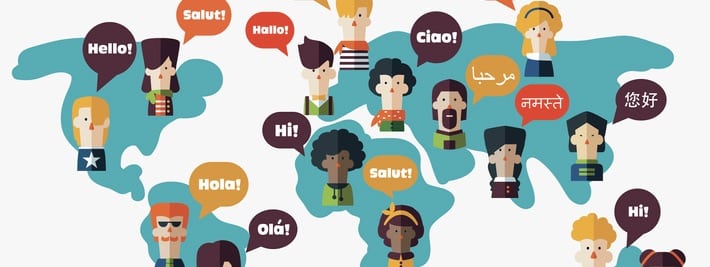In today’s globalized world, companies must often communicate with audiences that speak different languages and belong to diverse cultures. The necessity for effective multilingual marketing and public relations strategies is more critical than ever. Cultural sensitivity, language proficiency, and localization are key ingredients in crafting communication strategies that resonate across borders. This article provides insights and practical tips for engaging with multilingual markets effectively.
The importance of cultural sensitivity
The role of communication has grown significantly in modern society. The ability to communicate with people of different backgrounds and linguistic origins is essential for both individuals and enterprises.
When expanding to new markets, understanding and respecting the local culture is vital. This goes beyond simple translations; it’s about adapting your message to suit the nuances of the local culture. A campaign that works well in one country might not be effective or could even be offensive in another. Therefore, it’s essential to research and understand the cultural context before launching any PR or marketing campaign.
Diversify
Do take into account the variety of your English-speaking target market. Examine data on race, ethnicity, gender, age, purchase patterns, etc. Before even thinking about implementing a multilingual plan, it is important to have all the answers to these questions in hand. This is part of having an effective content marketing strategy in place.
Not having a well-developed content marketing strategy in your native country can only make things more difficult when you have to take into consideration other countries, languages, and cultures. To design your own multilingual approach in other regions of the world, you must first thoroughly understand your own market. Don’t wait too long to consider additional overseas markets, though. You wouldn’t want your rivals to beat you in the meantime!
Language proficiency and localization
In the realm of multilingual PR and marketing, fluency in the target language is only the starting point. Localization—the process of adapting a product or content to a specific locale or market—takes language proficiency to another level. It’s not just about translating words, but also about conveying the correct meaning, tone, and context. This is true whether you’re conducting a negotiation, opening a foreign bank account, or launching a new brand.
To achieve this, working with native speakers can be invaluable. They bring an intimate understanding of the language’s intricacies and the cultural context that a non-native speaker might miss. Additionally, using professional localization for SaaS technology can help ensure the accuracy and appropriateness of your content in different languages.
The role of translation tools
Technological advancements have brought a slew of translation tools that can aid in your multilingual PR and marketing efforts. One such device is the headphone translation system. This technology can translate languages in real time, which is extremely valuable in PR events like press conferences or product launches attended by international media.
These devices not only overcome language barriers but also promote inclusivity by making your content accessible to a wider audience. However, while translation tools are powerful, they should complement and not replace the expertise of human translators. They are excellent for real-time translation needs, while human expertise is crucial for content creation that requires a deep understanding of cultural nuances and context.
Other translation devices such as portable translators and smartphone apps can also help in real-time interactions and conversations. These tools are particularly useful in customer service or social media interactions, where swift responses are crucial.
Maximizing opportunities
Effective PR and marketing in multilingual markets offer immense potential. It not only expands your reach but also builds a positive brand image of being inclusive and respectful of cultural diversity. By utilizing online invoicing systems, you can efficiently manage your financial transactions while focusing on creating impactful PR and marketing campaigns in diverse language markets.
Knowing where to post and promote on social media is important to creating an effective multilingual marketing plan. When communicating with a foreign audience, be sure you are using the right social media tools and platforms. Utilizing marketing automation can help ensure you are using the right channels with the right messages to reach your foreign audience, providing a consistent and effective multilingual marketing plan.
By leveraging the power of cultural sensitivity, language proficiency, and localization, businesses can truly connect with their diverse audiences and build lasting relationships.
Conclusion
Ultimately, in the field of PR and marketing, communication is key. When dealing with multilingual markets, the challenge is to ensure that nothing is ‘lost in translation’. By employing the right strategies, and utilizing available resources and tools, businesses can ensure their message resonates effectively across different languages and cultures.



